Data Status List
Data status lists allow you to review time series data by groups (such as all precipitation or all flow gages) and provide details for more or fewer time series data than what appears in the geo-referenced map display. You can create a data status list by retrieving time series data from a DSS file. Once a data status list has been created, review the data to determine the time window for your forecast, add or delete time series pathnames to the data status list, and edit data specific to the time series data.
Creating a Data Status List
To create a data status list:
- From the Data Status Summary dialog, from the File menu, click New. The Data Status Summary dialog will now be blank. From the Edit menu, click Browse DSS, the Select Pathnames dialog will open (Figure 1).
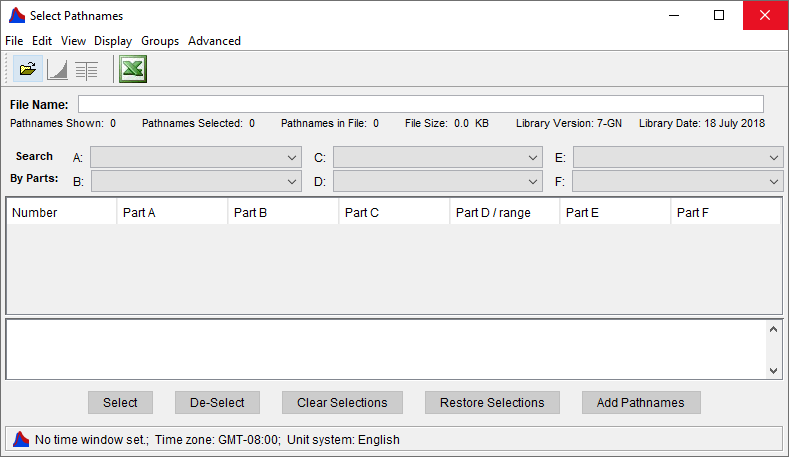
- From the File menu, click Open, an Open HEC-DSS File browser will open (Figure 2). Navigate to the location of a DSS file, double-click on the name of a DSS file, the Open HEC-DSS File browser will close (Figure 2).
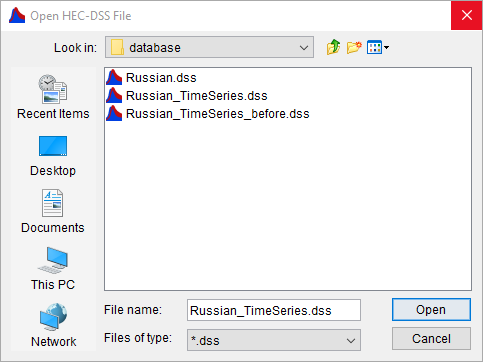
- The Select Pathnames dialog (Figure 3), will now display the available pathnames in the selected DSS file.
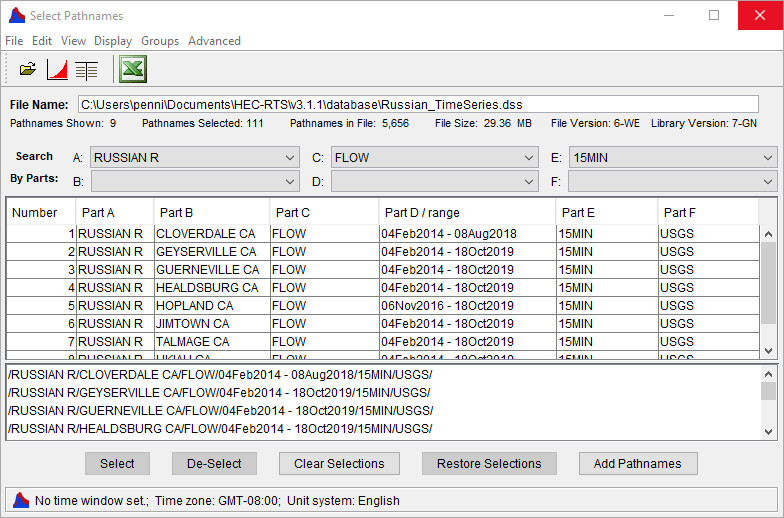
- To add DSS pathnames to a data status list, highlight a row(s) in the table, click Select, your selection(s) will display in the selection box.
- Since the selected DSS file can contain many pathnames, to assist you in finding the correct pathnames, several filter lists are available in the Search By Parts area of the Select Pathnames dialog (Figure 3).
- When you are finished selecting your pathnames, click Add Pathnames (Figure 3). From the File menu, click Close, the Select Pathnames dialog (Figure 3) will close. The Data Status Summary dialog will now contain the selected pathnames.
- To save the data status list, from the File menu (Data Status Summary Dialog), click Save. A Save File browser will open (Figure 4). In the File name box (Figure 4), by default, HEC-RTS will save to the default data status list (CriticalData.dataStatus). If you want to save to the default data status list, click OK. The Save File browser will close (Figure 4), and the default data status list (CriticalData.dataStatus) will now contain your selected pathnames.
- If you do not want to save to the default data status list, from the Save File browser, enter a name in the File name box (Figure 4). The Folder box (Figure 4) will contain the default location (C:\Users\xxxx\Documents\HEC-RTS\v3.1.1\watershed\WS10_HEC_RussianRiver\shared) on your workstation where the new data status list will be saved. Click OK, the Save File browser will close (Figure 4), an information window will display telling you that the data status list has been saved. Click OK, the information window will close.
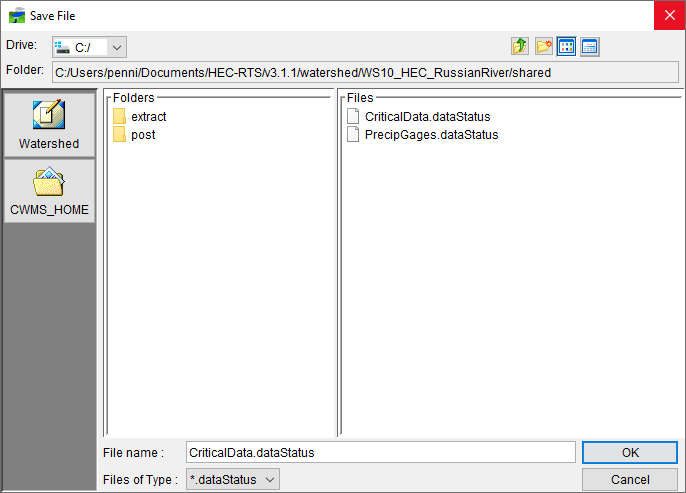
Open an Existing Data Status List
To open an existing data status list, from the Data Status Summary dialog, from the File menu, click Open, and an Open File browser (Figure 5) will open. From the Files box select a data status list from the available files. Click OK, the Open File browser will close, and the selected data status list will display in the Data Status Summary dialog. 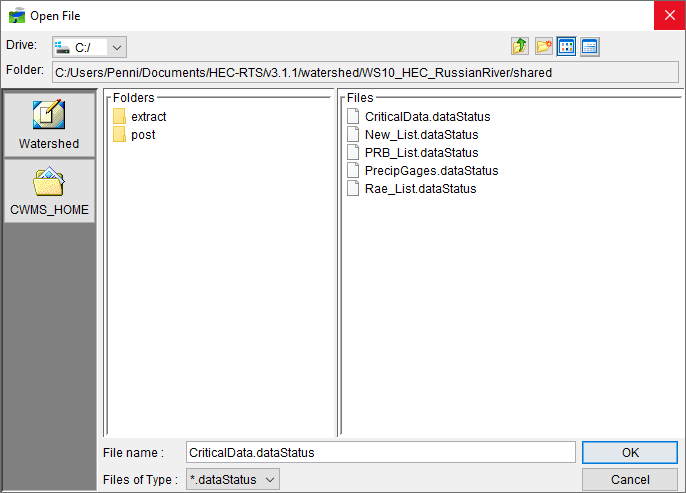
Make a Copy of an Existing Data Status List
To make a copy of an existing data status list, from the Data Status Summary dialog, from the File menu, click Save As, the Save File browser (Figure 4) will open. From the File name box, enter a filename for the new data status list. Click OK, the Save File browser will close (Figure 4), an information window will display telling you that the data status list has been saved. Click OK, the information window will close.
Adding DSS Pathnames to a Data Status List
To add DSS pathnames to a data status list:
- From the Data Status Summary dialog, from the File menu, click Open, and an Open File browser (Figure 5) will open. From the Files box select a data status list from the available files. Click OK, the Open File browser will close, and the selected data status list will display in the Data Status Summary dialog.
- From the Edit menu, click Browse DSS, the Select Pathnames dialog (Figure 2) will open. From the File menu, click Open, an Open HEC-DSS File browser will open (Figure 2). Navigate to the DSS file that contains the pathnames you want to add to the selected data status list. Select the DSS file, click Open, the Open HEC-DSS File browser will close.
- The Select Pathnames dialog (Figure 2), will display all the available pathnames in the selected DSS file.
- To add DSS pathnames, highlight the pathnames in the table by clicking on a row, click Select, the selection will display in the selection box (Figure 3). Continue adding pathnames by selecting them in the table and clicking Select.
- When all pathnames have been selected, click Add Pathnames. From the File menu, click Close, the Select Pathnames dialog will close (Figure 3).
- From the Data Status Summary dialog, click Save. A Save window will open (Figure 6). The Save window is asking do you want to replace the selected data status list. Click Yes, the Save window will close, and an information window will open. This window lets you know the selected data status list has been saved. Click OK, the information window will close.

Delete a DSS Pathname from a Data Status List
To delete a DSS pathname from a data status list, from the Data Status Summary dialog, from the Data Set column of the table, select a pathname. From the Edit menu (Data Status Summary Dialog), click Delete Row(s). The selected pathname will no longer display in the table on the Data Status Summary dialog. From the File menu, click Save, a Save window will open (Figure 6). The Save window is asking do you want to replace the selected data status list. Click Yes, the Save window will close, and an information window will open. This window lets you know the selected data status list has been saved. Click OK, the information window will close.